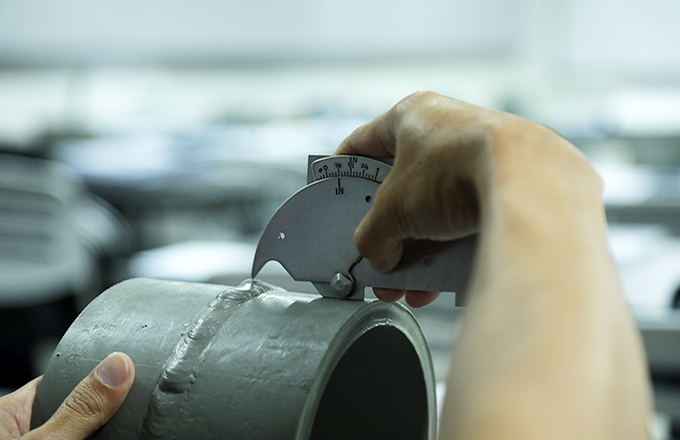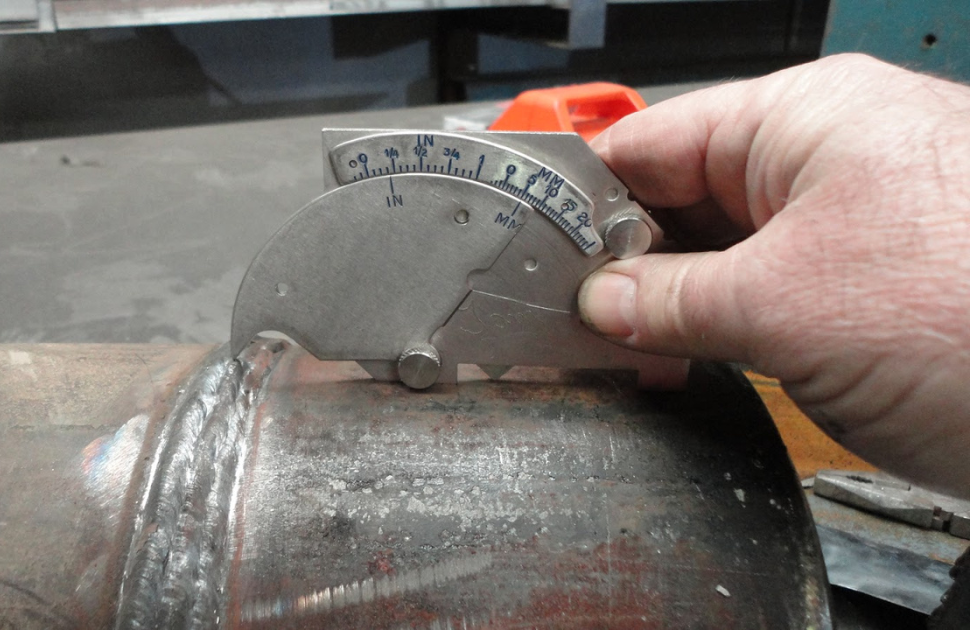Complete Houston Welding Inspection for Boosted Performance and Resilience
A Comprehensive Overview to Recognizing Just How Welding Inspection Works: Techniques, Standards, and Best Practices for High Quality Assurance in Metal Fabrication
Comprehending the complexities of welding evaluation is important for preserving the stability of metal construction. Different techniques, such as visual and ultrasonic screening, play a crucial duty in recognizing possible problems, while adherence to established requirements guarantees compliance and durability. Furthermore, applying ideal methods can substantially improve quality control actions. Nevertheless, the landscape of welding examination is not without its challenges. What problems occur in the field, and how can these be efficiently reduced? Exploring these aspects reveals the depth of this vital self-control.
Relevance of Welding Examination
Although welding is an essential process in various sectors, its honesty straight affects the security and efficiency of parts and structures. Reliable welding examination is crucial for determining flaws that might compromise the high quality and sturdiness of bonded joints. This procedure makes certain adherence to developed standards and specs, which are vital for keeping architectural honesty and functional reliability.
Welding assessment serves several objectives, including validating that the welding procedure has been implemented properly, assessing the top quality of materials used, and verifying that the ended up product fulfills regulative and sector requirements (Houston Welding Inspection). With rigorous assessment, possible concerns such as porosity, cracks, and incomplete combination can be found early, preventing costly repair services and reducing safety risks
In addition, consistent welding evaluations foster self-confidence amongst stakeholders, including engineers, clients, and regulative bodies, by demonstrating a dedication to quality control. The value of welding examination can not be overemphasized; it is essential not just for conformity with lawful demands but additionally for improving the general performance of bonded frameworks. Eventually, a durable welding assessment program is a proactive procedure that safeguards versus failings, making certain the longevity and reliability of welded components in their designated applications.
Usual Welding Evaluation Methods

Visual examination is the initial line of defense, permitting assessors to recognize surface area defects such as splits, undercuts, or insufficient blend. Radiographic screening makes use of X-rays or gamma rays to expose interior problems, making it suitable for complicated welds. Ultrasonic screening uses high-frequency audio waves to discover subsurface defects, giving accurate measurements of weld integrity.
Magnetic particle testing is efficient for ferromagnetic materials, highlighting surface area and near-surface interruptions when fragments are used to an electromagnetic field. On the other hand, color penetrant screening utilizes a fluid dye to reveal surface-breaking flaws, ensuring that also the tiniest defects are identified.
Each strategy has its restrictions and staminas, typically necessitating a combination of approaches for extensive analysis - Houston Welding Inspection. By applying these examination strategies, high quality assurance in steel fabrication is attained, ensuring that bonded frameworks meet safety and security and performance requirements
Sector Standards for Welding


The American Welding Culture (AWS) and the American National Specification Institute (ANSI) are 2 noticeable companies that develop welding requirements. AWS D1.1, for instance, lays out the requirements for welding steel structures, while AWS D1.2 concentrates on aluminum. Globally, the ISO 3834 common addresses top quality needs for fusion welding, offering a framework appropriate throughout national boundaries.

Ideal Practices for High Quality Assurance
Quality guarantee in welding is critical to reference achieving sturdy and safe building and constructions. Applying ideal techniques makes certain that every weld fulfills the required requirements and standards. Establishing a comprehensive high quality management system (QMS) tailored to the certain welding task is vital. This try this website QMS ought to define procedures, duties, and functions to mitigate dangers and enhance liability.
Normal training and certification of welding employees are vital for preserving a competent workforce. Continuous education on the most up to date welding techniques and innovations ensures that examiners and welders are educated about present criteria and practices.
Furthermore, carrying out pre-weld examinations to assess materials and devices can stop flaws before they occur. Houston Welding Inspection. During the welding process, real-time surveillance and documents of welding parameters assist determine incongruities immediately. Post-weld evaluations must include detailed exams making use of non-destructive testing (NDT) methods to make sure the stability of the welds
Moreover, keeping clear interaction amongst staff member promotes a culture of quality. Regular audits and testimonials of the welding procedure help recognize areas for improvement. By sticking to these ideal techniques, companies can achieve optimal quality control, ultimately leading to enhanced safety and security and efficiency in metal manufacture jobs.
Challenges in Welding Assessment
Although welding evaluation is vital for making sure structural integrity, it presents a variety of obstacles that can make complex the here are the findings evaluation procedure. One substantial difficulty is the irregularity in welding strategies and products used, which can impact the uniformity of weld quality. Various welders might utilize varying approaches, causing inconsistencies that inspectors requirement to identify and review.
Another obstacle entails the discovery of issues. Non-destructive testing (NDT) techniques, such as radiographic and ultrasonic screening, can be intricate and need proficient service technicians to translate results properly. Incorrect positives or negatives can happen, potentially causing expensive rework or compromised safety and security.
Furthermore, the presence of environmental factors, such as temperature level and humidity, can influence the stability of welds and the performance of examination techniques. Inspectors have to likewise browse the regulative landscape, ensuring compliance with sector requirements, which can differ by jurisdiction and application.
Verdict
Finally, welding examination plays an essential role in making sure the honesty and safety of steel manufacture. Utilizing a selection of evaluation strategies, adhering to well established sector standards, and carrying out effective high quality administration practices collectively boost the dependability of welded structures. Regardless of the challenges dealt with in the examination process, a dedication to continual improvement and adherence to best methods can significantly bolster the quality control framework, cultivating higher self-confidence amongst stakeholders in the welding sector.
Effective welding evaluation is vital for recognizing issues that could compromise the quality and longevity of bonded joints.Moreover, regular welding assessments foster confidence among stakeholders, including engineers, clients, and regulatory bodies, by demonstrating a commitment to quality assurance.The American Welding Society (AWS) and the American National Specification Institute (ANSI) are 2 famous companies that develop welding requirements. Throughout the welding process, real-time tracking and documents of welding criteria aid recognize inconsistencies instantly. Despite the challenges faced in the examination procedure, a dedication to continuous improvement and adherence to ideal techniques can substantially boost the high quality guarantee structure, promoting higher confidence among stakeholders in the welding sector.